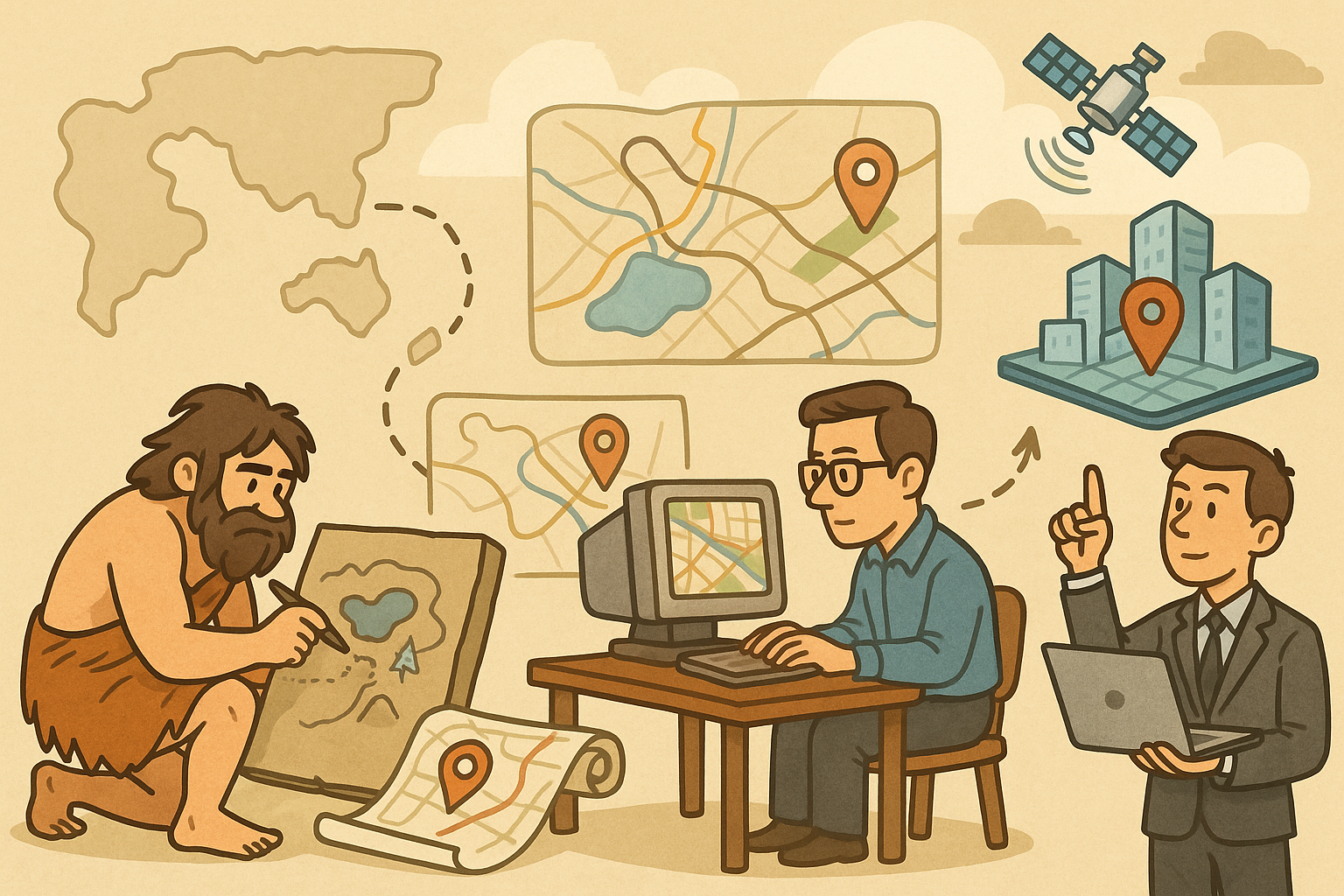Your Cart is Empty
Customer Testimonials
-
"Great customer service. The folks at Novedge were super helpful in navigating a somewhat complicated order including software upgrades and serial numbers in various stages of inactivity. They were friendly and helpful throughout the process.."
Ruben Ruckmark
"Quick & very helpful. We have been using Novedge for years and are very happy with their quick service when we need to make a purchase and excellent support resolving any issues."
Will Woodson
"Scott is the best. He reminds me about subscriptions dates, guides me in the correct direction for updates. He always responds promptly to me. He is literally the reason I continue to work with Novedge and will do so in the future."
Edward Mchugh
"Calvin Lok is “the man”. After my purchase of Sketchup 2021, he called me and provided step-by-step instructions to ease me through difficulties I was having with the setup of my new software."
Mike Borzage
Harnessing API Integrations for Enhanced Design Workflows
October 13, 2025 7 min read


Introduction to API Integrations in Design Workflows
In today’s cutting‐edge design environments, API integrations serve as the connective tissue between specialized software tools and the creative processes that drive innovation. With design software becoming ever more complex and interdependent, the need to seamlessly connect disparate systems has led to the adoption of APIs as an essential element in streamlining workflows. In modern design practices, APIs enable direct communication between mechanisms such as CAD tools, rendering engines, and project management applications, ensuring that data flows accurately and swiftly to support the iterative nature of design work. These integrations have been at the forefront of eliminating manual data transfers, reducing inconsistencies, and significantly enhancing productivity in industries ranging from product visualization to architectural design.
Defining API Integrations and Their Role
The core purpose of an API, or Application Programming Interface, is to provide a well-defined, structured means of communication between distinct software systems. This means that in design workflows, APIs act as the catalysts for digital transformation. They reduce the friction involved in moving data from one tool to another, enabling design processes to become more agile and robust. Whether it is transferring updated models, synchronizing project files, or ensuring that feedback loops are captured in real time, API integrations are vital. Their role is not limited to merely connecting software systems; they also provide the framework for automated checks, custom data analytics, and even the activation of machine learning models that can predict design trends. By providing secure channels for software communication, organizations can maintain data integrity and ensure that each subsystem is up-to-date, making the design lifecycle smoother and more reliable.
Challenges and Initial Considerations for Success
While the advantages of API integrations are significant, designers and developers must also address a set of challenges. Among these are compatibility issues between legacy systems and modern cloud-based applications, mitigating security vulnerabilities, and ensuring that integration does not impede the overall speed of design workflows. Initial considerations include choosing robust APIs that come with extensive documentation, clear error handling protocols, and a proven track record in similar industries. Additionally, careful planning around data mapping, schema consistency, and how to reconcile differences in file formats is essential to avoid disruptions in the design process. It is also crucial to factor in the scalability of the API, as design projects may expand over time, necessitating an interface that can handle increased loads and more intricate information exchanges. The necessity for ongoing maintenance and updates must be balanced with the immediate benefits, ensuring that the integration solution remains secure and functional as both technology and project requirements evolve.
Exploring the Benefits and Use Cases of API Integrations
The practical benefits of API integrations in design workflows extend far beyond convenience, reshaping the way creative professionals and engineers collaborate. By enabling seamless data exchange between disparate design tools, APIs facilitate an environment where iterative changes are readily and immediately reflected across all aspects of a project. This ensures that design teams work with the most current versions of data, leading to improved version control and markedly reduced errors. One of the most compelling outcomes is the rise in workflow automation, where repetitive tasks that once required manual input are now executed automatically. This reduction in manual intervention not only saves time but also minimizes the risk of human error, thus boosting the overall quality of the final design product. Moreover, real-time communication enabled by API integrations paves the way for dynamic feedback loops, allowing teams to react and adapt on the fly.
Facilitating Seamless Data Exchange
Automation stands at the center of these advanced integrations, where real-time data pipelines transform static workflows into dynamic environments. By connecting tools that traditionally operated in isolation, teams can now experience true synergy across the design lifecycle. For instance, when a modification is made in a CAD model, the update can automatically be pushed to simulation and visualization software. This continuous data feedback, powered by APIs, ensures that all components in the design chain reflect the most recent changes, enhancing accuracy and reducing delays. In this scenario, the capacity for real-time collaboration is heightened by APIs as design professionals across different locations can access synchronized data, actively participate in discussions, and make decisions supported by up-to-date analytics. Such level of real-time exchange fosters an ecosystem where iterative creativity is not stifled by technical barriers.
Real-Time Collaboration and Customization
Another critical aspect of the benefits offered by API integrations is the potential for real-time collaboration and the customization of design processes. By leveraging APIs, design teams can build tailored solutions that specifically cater to their respective workflows and project demands. An example of this is the creation of automated alert systems that notify team members about version updates or highlight discrepancies between design iterations. Furthermore, custom dashboard integrations can be developed to monitor project progress, providing insights into areas that may require additional focus or rework. In such setups, APIs ensure that various pieces of design software effectively communicate and adapt to new instructions based on the evolving project requirements. The resulting workflow is not only more efficient but also significantly more adaptive to real-time changes. Key features include automated data backups, improved regulatory compliance, and broader integrations with cloud-based storage solutions. Ultimately, by offering the ability to customize and automate, these integrations act as a catalyst for higher productivity while reducing the possibility for error.
Implementation Strategies and Best Practices
Effective implementation of API integrations in design workflows demands careful attention to a series of technical and operational details. The process begins with a thorough evaluation of available APIs, where factors such as compatibility, performance benchmarks, and security protocols are meticulously reviewed. It is essential to identify APIs that provide extensive documentation and are widely supported by the design community so that developers and designers can work in synergy. A strategic approach should focus on incremental integration rather than an all-at-once overhaul. This means initially integrating a small subset of functionalities to test for interoperability and performance before expanding the scope. When considering integrations, it is imperative to recognize that even the most powerful API solutions may require customized adaptations to fit seamlessly within existing workflows.
Key Factors in API Selection and Compatibility Challenges
Developers must address several compatibility challenges during the integration process. One of the foremost considerations is ensuring that the API supports the various data formats and protocols already in use within a given design environment. A failure to do so can create significant bottlenecks, with data mismatches or communication delays hindering productivity. Security is another primary consideration, as sensitive design data often moves across multiple systems and external servers during these integrations. This necessitates the employment of encryption techniques, secure authentication methods, and regular API audits to guard against potential breaches. Furthermore, the selection process should emphasize the API’s scalability. As design projects evolve, the system must be able to adapt to increased data loads and the addition of new features without degrading performance. These crucial aspects are fundamental to a robust and secure integration strategy that empowers design teams while mitigating potential risks.
Strategies for Incremental Integration and Collaborative Practices
An incremental and systematically phased approach to API integration often yields the best long-term results. It allows teams to pilot the integration in a controlled environment, pinpoint weaknesses, and ameliorate issues before they become pervasive in large-scale production settings. This tactic gives designers and developers the opportunity to witness firsthand how the integration enhances application functionality, thereby providing strong justification for further investment and expansion. Additionally, fostering a culture of collaboration between design professionals and software developers is crucial. Such collaboration can be built on several foundational practices, including:
- Joint planning sessions where both teams outline integration objectives alongside potential pitfalls.
- Clear documentation practices ensuring that every step of the API communication process is transparently recorded and accessible.
- Ongoing training and support to keep both design and development teams informed of new features, security updates, and integration best practices.
Conclusion
In summation, API integrations have radically transformed design workflows by fostering a level of automation, customization, and collaboration previously unattainable with legacy systems. Through robust API frameworks, design and engineering teams are liberated from time-consuming manual tasks, which in turn enhances both the precision and speed of design execution. The numerous benefits range from enabling seamless data exchanges among various design applications to facilitating real-time collaboration efforts that empower teams to dynamically iterate on creative ideas. The success of these integrations hinges on deliberate and well-thought-out implementation strategies that emphasize incremental rollout, comprehensive security measures, and collaborative development.
Transformative Impact and Future Trends
As design demands continue to escalate in complexity and scope, the transformative potential of API integrations becomes increasingly evident. By bridging the gap between disparate design tools and processes, APIs set the foundation for a more cohesive, agile, and resilient workflow. With the technological landscape continuously evolving, it is paramount for organizations to invest in these integrations not only as a short-term efficiency booster but also as a long-term strategic asset. The emphasis on sound implementation practices – from careful API selection and rigorous testing to fostering synergy between designers and developers – is critical to harnessing the full power of these solutions. Looking ahead, continued advancements in cloud computing, machine learning, and real-time data analytics will further enhance the capabilities of API integrations, ensuring that design workflows remain innovative, adaptive, and future-proof.
Encouraging Further Exploration and Adoption
Ultimately, the journey toward a fully integrated design workflow is paved with continuous learning and adaptation. It is important for design professionals to remain curious and proactive when exploring new API solutions that can offer a competitive edge. The strategic implementation of APIs, when executed with attention to detail and proper planning, not only drives immediate gains in productivity but also lays the groundwork for sustainable creativity and operational efficiency. With a proven track record of reducing errors, saving time through automation, and enhancing communication across teams, APIs represent a compelling avenue for those looking to future-proof their design practices. Embracing these technologies today ensures that tomorrow’s design challenges can be met with innovative and scalable solutions, reinforcing the position of API integrations as a catalyst for progress in the design industry.
Also in Design News

Design Software History: Evolution of Geospatial Data Integration in Design Software: Historical Milestones, Technological Breakthroughs, and Future Trends
October 13, 2025 8 min read
Read More
Cinema 4D Tip: Optimizing Ambient Occlusion for Enhanced Realism in Cinema 4D Rendering
October 13, 2025 3 min read
Read More
V-Ray Tip: Enhancing UVW Mapping Techniques for Photorealistic V-Ray Renders
October 13, 2025 2 min read
Read MoreSubscribe
Sign up to get the latest on sales, new releases and more …


